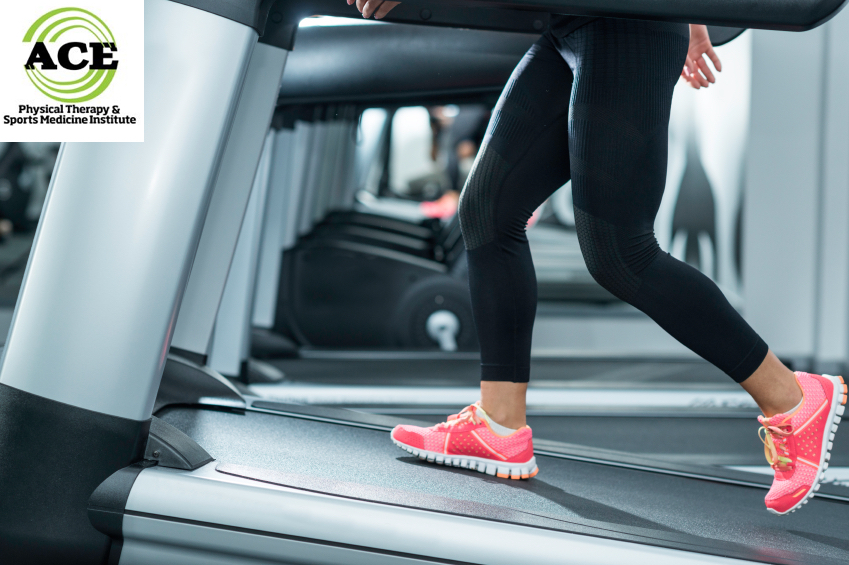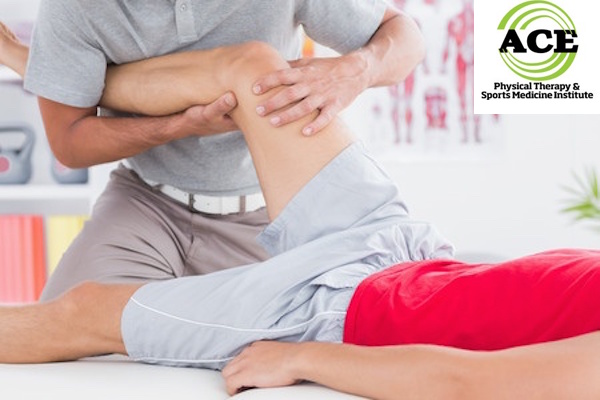INCLINE WALKING AND OSTEOARTHRITIS

Tid Bits of Info
- Incline walking with a grade of 5% or greater helps to reduce the forces in the knee.
- Incline walking helps to increase the heart rate and can do it without an increase in walking speed.
- A 2% incline will produce the same amount of energy consumption (work done by the body) as walking on flat ground.
- Incline walking activates more muscle mass in the lower extremities compared to walking on a flat surface.
- Seek the advice and treatment of a Physical Therapist if you have knee pain.
By participating in a regular fitness walking program, people can lose weight, balance sugar levels, and improve cardiovascular health. Walking offers a wide variety of benefits, and healthcare professionals regularly recommend walking to their patients. Walking too much too soon can sometimes have negative “side effects.” Some walkers suffer a common, devastating condition: the onset of Osteoarthritis or OA in the knee joint. Physical Therapists can help patients manage their OA, reducing pain and injuries.
The Onset of Osteoarthritis (OA)
The ends of the bones are covered with a smooth articular cartilage (Hyaline cartilage), which helps to reduce the friction produced when the joint moves. If the joint is subjected to too much sheer or compression force, damage can occur in the form of Osteoarthritis or OA. Since the damage to the joint is often due to the cumulative effect of these forces, it can develop and worsen over time. When the force is too great, the Hyaline cartilage could be crushed or “sheered-off.” If this happens, the cartilage does not have the ability to “heal” or re-generate. Over time, this cartilage can continue to deteriorate and may eventually be gone in the damaged area. Once this happens, the “raw” bone underneath is exposed, and severe pain may occur when the area comes in contact with another part of the joint.
Treating OA
Physical therapists treat patients with OA on a daily basis. They are continually researching and learning ways to improve treatment, reduce pain, and make OA patients more comfortable. Treatment often involves teaching patients proper stretching and exercise routines and introducing tools that can assist in managing OA.
One new theory of treatment is to have the patient walk on an incline. Incline walking has been used for cardiovascular training but has recently been studied to test its efficacy in controlling the movement in the knee joint. The excess motion within the knee joint during gait can lead to excessive force on the different compartments. In some people, there is a lot of “side to side” or abduction/adduction movements in the knee joint when they are walking regardless of their walking speed. They tend to move excessively in one direction, and this can lead to an increase in compressive or shear force in a given compartment. The excessive force has been shown to be a precursor to the onset of OA. The medial side of the joint is more commonly involved and is more frequently affected by OA. In theory, if the motion can be controlled, the chances of developing OA significantly decrease. In a recent study, the more the treadmill was inclined there was less side-to-side motion in the knees. The incline walking requires more muscle contraction throughout the lower extremities compared to flat surface walking. To maintain walking speed, as the incline was increased the patient must lean forward and change their center of gravity. Incline walking appears to reduce the medial movement and anterior loading on the support leg. Consequently, the joint is protected from excessive forces.
These findings are useful in rehabilitation protocols for patients with the early stage OA or a patient that has undergone a total or partial knee replacement surgery. In either instance, it is imperative to reduce the forces on the compartments of the joint to slow down the progression of OA or to extend the life of the prosthetic device.
Physical Therapy incorporates a safe form of incline walking for these patients. This should be in addition to the thorough stretching and strengthening program that has been used for years in the rehabilitation efforts of this patient population.
Physical therapists use an inclined treadmill for OA patients or patients with a partial knee replacement to help patients benefit from greater muscle contraction, less side-to-side motion, and a positive cardiovascular result. The decrease in force on the involved joint can enable the patient to exercise longer and with less pain and experience greater strength gains to help protect the joint.


























Zeolite Clinoptilolite | Grasscity Forums